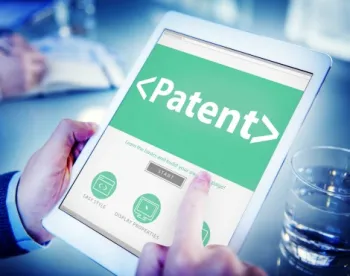The US Court of Appeals for the Federal Circuit considered whether a dependent claim invalidated by collateral estoppel also invalidates its parental independent claim. Google LLC v. Hammond Devel. Int’l, Inc., Case No. 21-2218 (Fed. Cir. Dec. 8, 2022) (Moore, C.J.; Chen, Stoll, JJ.)
The dispute began when Hammond Development sued Google, alleging that Google infringed several of Hammond’s patents on automated voice response systems. In response, Google filed multiple inter partes reviews (IPRs), one of which targeted Hammond’s ’483 patent. In that proceeding, the Patent Trial & Appeal Board (Board) held that all claims of the ’483 patent were obvious. Hammond did not appeal the decision in this IPR, which then became final, but only after Google filed an IPR against another of Hammond’s patents—the ’816 patent. The ’816 and ’483 patents are in the same family and share the same specification. In the later-filed IPR, the Board found claims 14 through 19 of the ’816 patent nonobvious and patentable. Google appealed.
Claim 14 is an independent claim and claim 18 depends from it. The parties agreed that the patentability of both claims rose and fell together. On appeal to the Federal Circuit, Google argued that claim 18 was invalid under the doctrine of collateral estoppel based on the prior art that rendered claim 18 of the ’483 patent invalid.
A party seeking to invoke collateral estoppel must show the following:
-
The issue is identical to one decided in the first action.
-
The issue was actually litigated in the first action.
-
Resolution of the issue was essential to a final judgment in the first action.
-
The party against whom collateral estoppel is being asserted had a full and fair opportunity to litigate the issue in the first action.
Because the parties had agreed that all but the first of the elements of collateral estoppel were met, collateral estoppel would apply if the issues of patentability were identical between the adjudicated and unadjudicated claims. The Federal Circuit found that slight differences in the claim language of the involved patents were immaterial because they related only to the number of application servers, and Google’s expert had credibly testified that distributing software applications across multiple servers was well known in the art and obvious. Hammond did not mount a substantive challenge to the expert evidence. As the Court noted, “collateral estoppel may apply even if the patent claims ‘use slightly different language to describe substantially the same invention,’ so long as ‘the differences between the unadjudicated patent claims and adjudicated patent claims do not materially alter the question of invalidity.’”
Google also attacked the validity of independent claim 14 of the ’816 patent. Although Google’s attack against claim 14 was based on a different combination of references (as compared to claim 18), the Federal Circuit apparently applied collateral estoppel to find claim 14 invalid as well, citing an agreement between the parties that “if claim 18 is unpatentable, then independent claim 14 is as well.”
Finally, Google argued that dependent claims 15 through 17 and 19 were invalid under doctrine of collateral estoppel, but the Federal Circuit noted that Google had failed to raise any collateral estoppel argument against those claims and there was no party agreement as to the similarity of those claims with claims adjudicated in the ’483 patent IPR. Accordingly, the Court held that Google had waived these arguments by not raising them in its opening brief. The Court affirmed the Board’s conclusion that claims 15 through 17 and 19 were patentable and reversed the Board’s finding that claims 18 and 14 were patentable.



 />i
/>i

